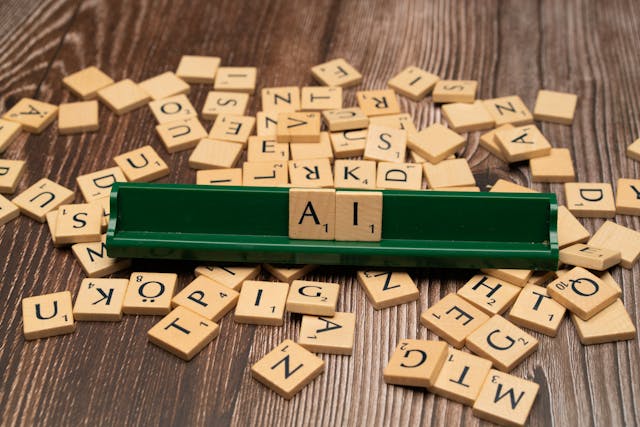Introduction
Artificial Intelligence (AI) is rapidly transforming various sectors, and education is no exception. The integration of AI into educational environments offers unprecedented opportunities to enhance teaching and learning. From personalized learning experiences to innovative classroom technologies, AI is reshaping how students learn and teachers instruct. This blog post explores the impact of AI on education, focusing on personalized learning and the future of classroom technology. We'll delve into how AI is being used to tailor educational experiences, examine practical examples and case studies, and consider what the future holds for AI in education.
Personalized Learning: Tailoring Education to Individual Needs
Personalized learning leverages AI to adapt educational content and strategies to meet the unique needs of each student. This approach aims to maximize learning efficiency and effectiveness by addressing individual strengths, weaknesses, and learning styles.
How AI Enables Personalized Learning
Adaptive Learning Platforms: AI-powered adaptive learning platforms analyze student performance data to adjust the difficulty and type of content presented. These platforms provide targeted practice and resources based on individual progress, helping students master concepts at their own pace.
Intelligent Tutoring Systems: AI-driven tutoring systems offer real-time feedback and support. By analyzing a student’s responses and learning patterns, these systems can identify areas where the student needs additional help and provide customized explanations and exercises.
Personalized Recommendations: AI algorithms can recommend supplementary materials, such as articles, videos, and practice exercises, tailored to a student's interests and learning needs. This keeps students engaged and supports their learning journey outside the classroom.
Case Study: Dream Box Learning
Dream Box Learning is an adaptive math program that uses AI to deliver personalized instruction. The platform adjusts the difficulty of math problems based on each student's responses and progress, ensuring that learners receive appropriate challenges and support. Studies have shown that students using Dream Box demonstrate significant improvements in math proficiency.
Innovative Classroom Technology: Enhancing the Learning Experience
AI is not only personalizing learning but also revolutionizing classroom technology. From smart devices to AI-driven analytics, these innovations are creating more interactive and effective learning environments.
Smart Classrooms
AI-Powered Assistants: Virtual teaching assistants and chatbots can help answer students' questions, provide additional resources, and support teachers with administrative tasks. These assistants are available 24/7, offering students and educators on-demand support.
Interactive Whiteboards: Modern interactive whiteboards equipped with AI can recognize and respond to handwritten notes, diagrams, and even student gestures. This technology enhances engagement and allows for more dynamic teaching methods.
Automated Grading Systems: AI tools can assist in grading assignments and exams, providing teachers with more time to focus on interactive and creative aspects of teaching. Automated grading systems can also offer detailed analytics on student performance.
Case Study: Class craft
Class craft is an educational platform that combines gamification with AI to create a more engaging classroom experience. By integrating game mechanics into lessons, Class craft motivates students to participate and collaborate while providing teachers with insights into student behavior and progress.
The Future of AI in Education
The future of AI in education promises continued advancements and transformative changes. Here’s what to expect:
Enhanced Personalization
Predictive Analytics: AI will use predictive analytics to anticipate student needs and proactively address potential learning challenges before they become significant issues.
Custom Learning Paths: AI will further refine personalized learning paths, creating highly customized educational experiences that adapt to each student's evolving needs and goals.
Improved Accessibility
AI-Driven Accessibility Tools: AI will enhance accessibility for students with disabilities through advanced tools such as speech-to-text, real-time translation, and adaptive interfaces.
Global Learning Platforms: AI will facilitate global learning by breaking down language barriers and providing resources tailored to diverse educational contexts and cultural backgrounds.
Collaborative Learning Environments
AI-Enhanced Collaboration Tools: AI will support collaborative learning by facilitating group projects, discussions, and peer-to-peer interactions, both within and beyond the classroom.
Virtual Reality (VR) and Augmented Reality (AR): AI-powered VR and AR will create immersive learning experiences, allowing students to explore complex concepts and historical events in interactive and engaging ways.
Conclusion
AI is transforming education by personalizing learning experiences and introducing innovative technologies that enhance teaching and learning. As AI continues to evolve, it promises even greater advancements in personalized education, accessibility, and collaborative learning. By embracing these technologies, educators and students can unlock new opportunities for engagement and achievement. As we look to the future, it is essential to continue exploring and implementing AI-driven solutions that support educational excellence and inclusivity.





0 Comments